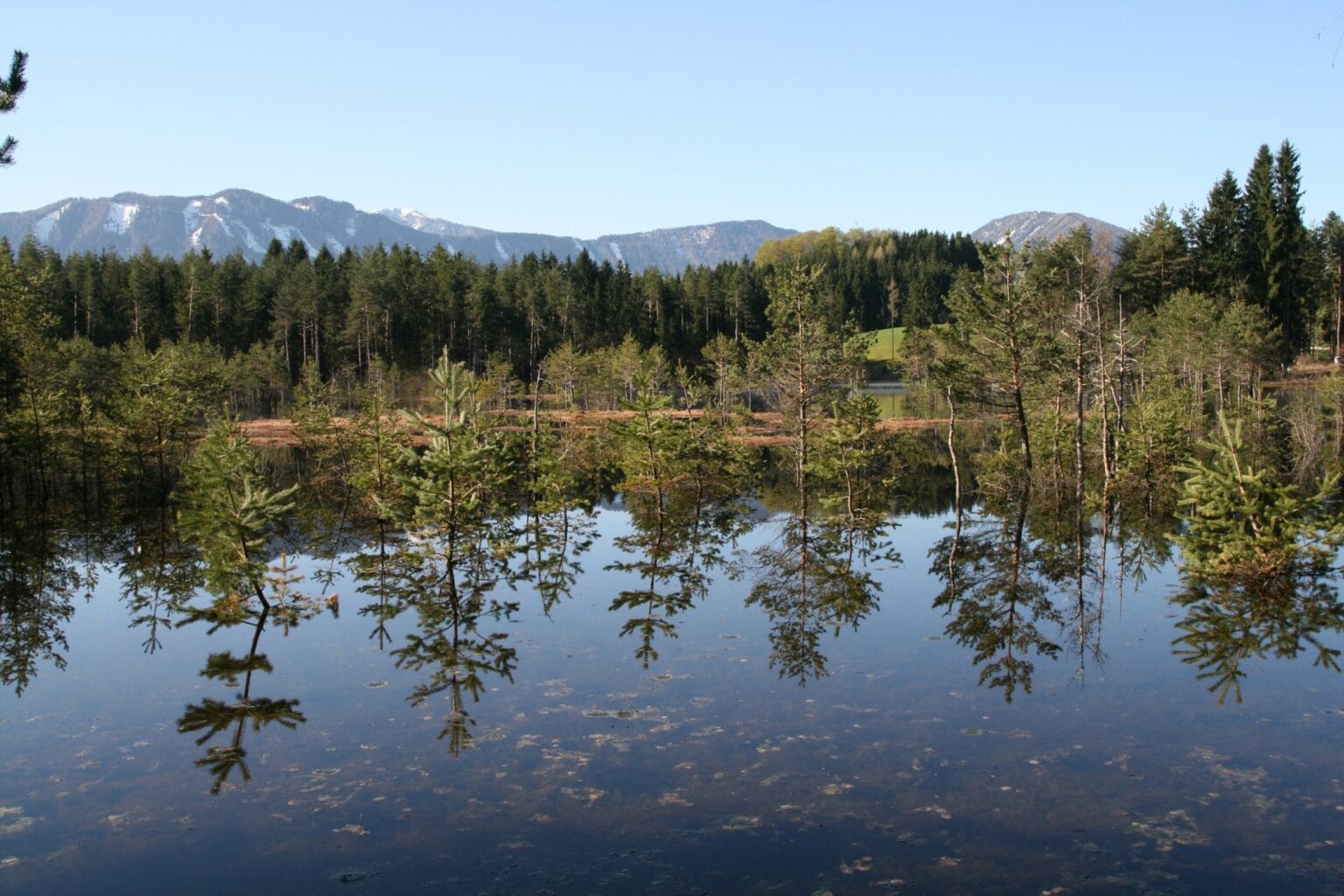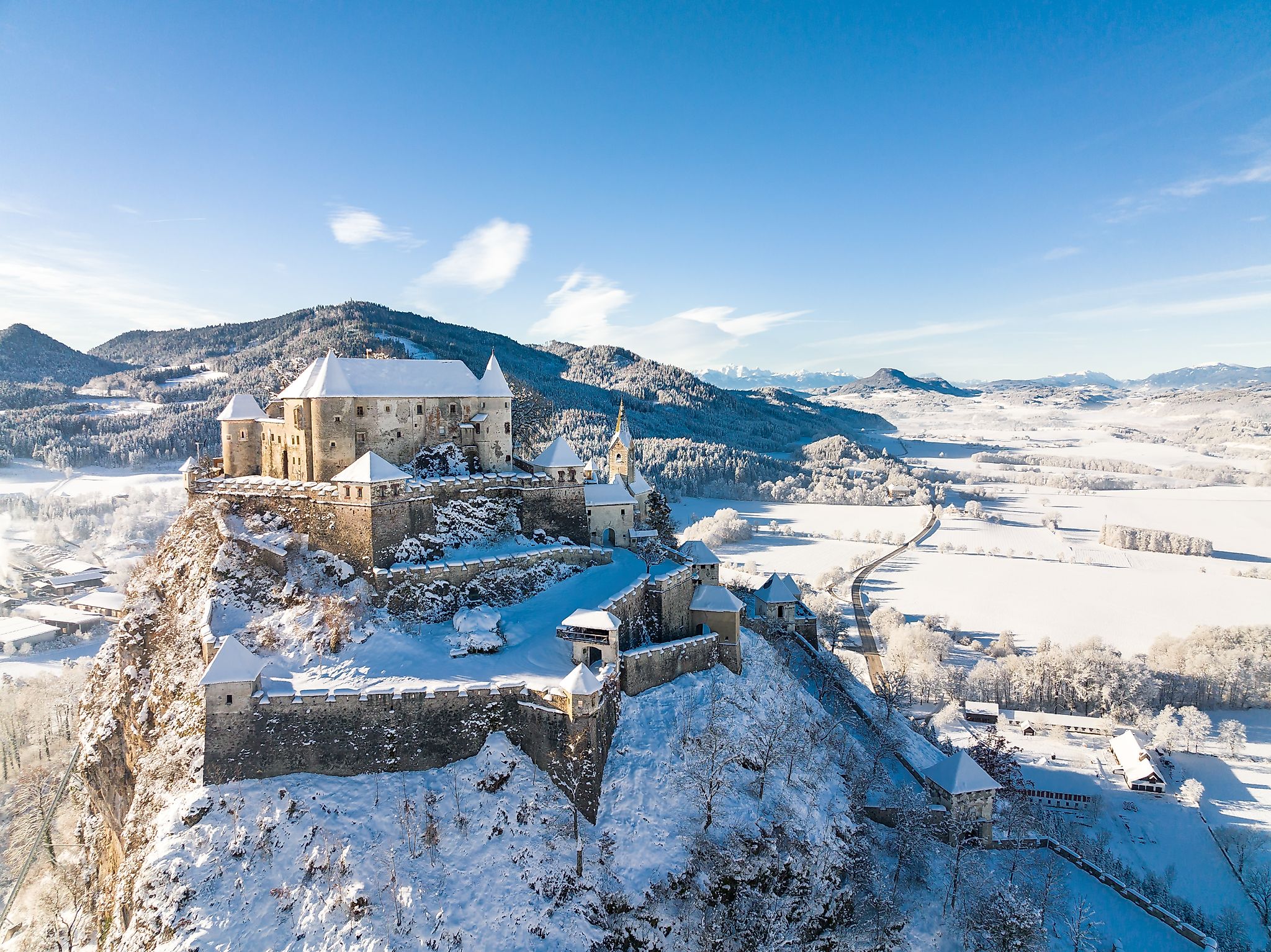Höflein Moor is a conservation area on the ridge of the Sattnitz mountains in the market town of Ebenthal, a few kilometres outside Klagenfurt am Wörthersee
Get in touch with nature
The conservation area lies at around 770 metres above sea level, in a flat hollow that is currently largely surrounded by forest, mainly stocks of spruce and pine trees. From the northern edge of the moor there is a wonderful view of the Hochobir, the highest massif of the North Karawanken with a height of 2,139 metres above sea level.
Ice age history
The rock underlay of the moor is formed by the conglomerate plate of the Sattnitzstock. The moor itself came about via a so-called dead-ice formation, and thus originated in the Ice Age. In this hollow, which was formed by the melting of the dead-ice after the Ice Age and is sealed off from the subsoil by a roughly nine-metre-thick layer of watertight clay sediment, initially a crystal-clear lake formed, which has gradually become silted up since the end of the Ice Age around 10,000 years ago. During its further development, layers of lake peat which are two to three metres thick formed on top of the first deposits of lake clay. Analysis of the pollen here has seamlessly documented the development of the vegetation around the moor from the end of the Ice Age to the present day, and thus granted scientists an insight into thousands of years of its development.
Structure and vegetation
The Höflein Moor currently comprises two parts, namely a central raised bog which is surrounded by a fen around the edges. The typical vegetation of the raised bog mainly comprises peat mosses, bog rosemary and cranberries, together with heather and Mugo pine, and the fen around the edges is mainly formed of sedge. The outermost areas of the moor clearly show its gradual development into a so-called carr of black elder.
Nature Conservation “Natura 2000”
In 1995 the entire moor was acquired by the Austrian League for Nature Conservation within the framework of “Aktion Wiedehopf”, to guarantee the moor lasting protection.
After its need for special protection was recognised by the European Union in 2008, the Carinthian Provincial Government also elevated the moor to the status of a Natura 2000 European protected area.

Mit dem Laden der Karte akzeptieren Sie die Datenschutzerklärung von Google.
Mehr erfahren




